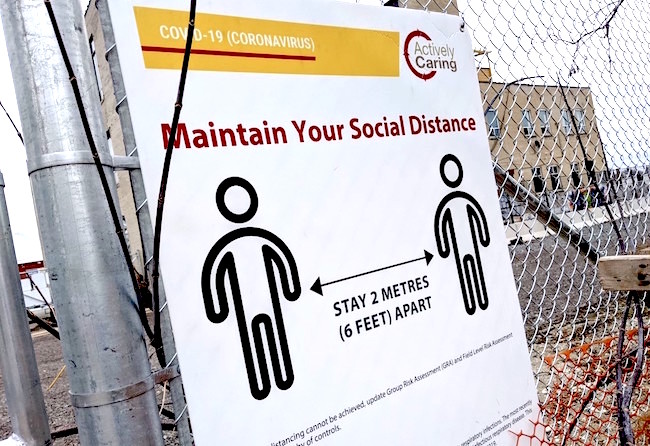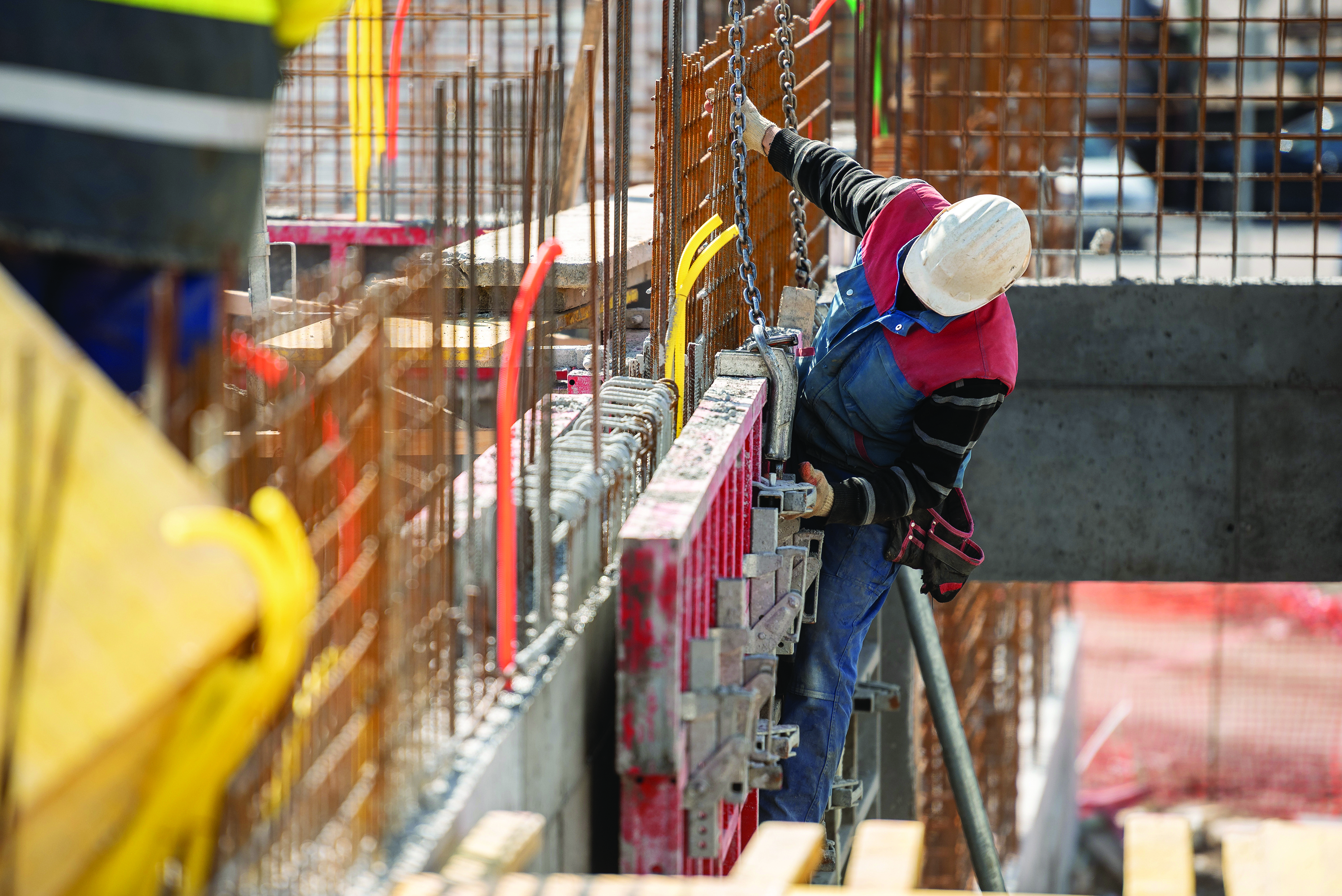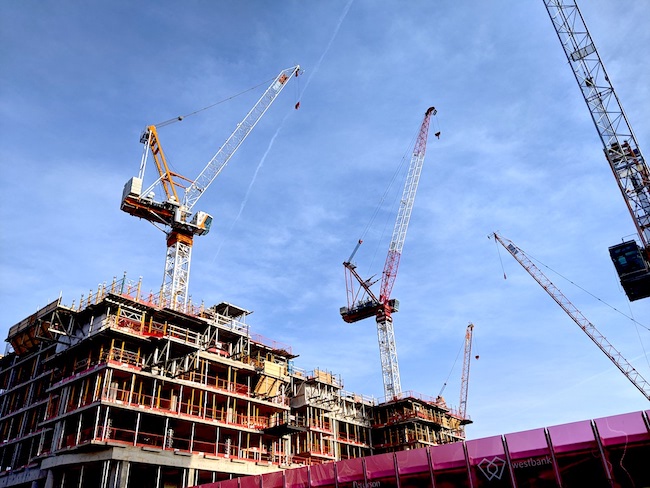
Top 10 Canadian construction trends to watch in 2021
By Mary Van Buren
Construction Construction Materials Financing Green Construction Health & Safety In-Depth Infrastructure Labour Law LEED P3s Roads Women in Construction
COVID-19 brought abrupt change to job sites in 2020. The industry can expect some further uncertainty despite the turning over of the calendar
After a turbulent 2020, which forced the industry to adapt on the fly to a series of new on-site safety protocols and an abruptly altered building market, contractors are facing volatility in the year ahead, with growth predicted in some segments of the market and decline in others.
Following a wholly unique year, Mary Van Buren, the president of the Canadian Construction Association, shares with On-Site the organization’s expectations and the top issues it’s tracking heading into 2021.
1. Rhetoric or reality: Will infrastructure investment dollars flow in time?
Billions of dollars have been earmarked through Infrastructure Canada’s Investing in Canada Plan, yet there are still billions that are uncommitted since 2018. With a severely hard-hit economy, will the feds, provinces and municipalities be able to set aside politics and get funds flowing, and people working? Mixing infrastructure stimulus with unrelated social policy goals will delay projects, interfering with economic recovery and getting people back to work.
2. Improved hygiene standards are here to stay
While COVID-19 has been devastating in so many ways, one positive outcome is the increased hygiene on job sites across Canada. Improved handwashing and bathroom facilities have addressed some of the downsides of working on job sites and may result in reduced spread of other common germs, like colds and flus.
3. Private sector stalls
Investor confidence has taken a beating in the commercial sector, as some businesses promise to significantly reduce their footprints. And, while the square foot per office worker was already declining, will it need to increase again to accommodate a smaller workforce, while respecting physical distancing? Project tendering began to slow down in the third quarter of 2020, which will have a significant impact on the design and engineering community first, followed by the construction industry late next year, unless this gap is filled with government work or a return to private sector investor confidence.
4. Workforce shortage worsens
The CCA has advocated and continues to advocate for a steady, flexible and dedicated commitment to infrastructure investment. With governments slow to launch economic stimulus in the form of infrastructure investment, placements for apprentices are most at risk. This will sharpen the already significant shortfall in skilled workers, such that recovery will be slower. Skilled tradespeople simply cannot be created overnight.

Firms can expect to continue facing a shortage of skilled labour in 2020. PHOTO: Adobe Stock/Monika
5. Risky business
Construction firms have long shouldered the majority of project risk. Throughout COVID-19, contractors took a leap of faith that owners would reimburse extraordinary costs related to COVID-19. While some owners have been flexible and fair, others have not. P3 models, seen as a panacea for large infrastructure projects, have not been as well received by contractors who have been charged with a disproportionate share of the risk. While vaccines may be on the horizon, COVID-19’s continued impact, lower investor confidence and contractors burning through their backlog could mean 2021 could be a make or break year for many. The small and medium-sized contractors who carry much of the upfront costs of projects are most at risk.
6. Rise of protectionism
Provinces with struggling economies and municipalities with limited funds may look inward, erecting trade barriers to narrowly focus on their constituents. This short-term thinking is already happening in British Columbia, with its Community Benefits agreements, which are Project Labour Agreements (PLA), as well as with Saskatchewan’s stated preference for Saskatchewan-based firms to win bids. Economists suggest that policies that impose trade barriers are harmful to the economy. Interprovincial trade barriers are inefficient, and do not support a fair, transparent and competitive procurement processes. It is essential that we stand united and work together to benefit all Canadians during recovery.
7. Greening of infrastructure
The federal government will continue to advance its sustainability strategy, which may lead to more projects in urban areas. We also need to tend to our infrastructure deficit. Highways, roads, bridges, ports and other forms of transportation infrastructure are integral to maintaining the quality of life Canadians enjoy. They are not only essential for personal commuting and travel, but also allow for movement of goods and services that underpin the economy.
The Canadian Trucking Alliance estimates, for instance, that over 90 per cent of all consumer products and foodstuffs are shipped by truck. According to the 2019 Canadian Infrastructure Report, nearly 40 per cent of roads and bridges are in fair, poor or very poor condition and 30 per cent of tracks for public transit require investment in the next decade. About 25 per cent of Canada’s potable water infrastructure, including watermains, reservoirs and dams, and 30 per cent of its wastewater infrastructure, including sewers and treatment plants, is in fair, poor or very poor condition. These needed infrastructure investments are an opportunity to reshape our communities in a more sustainable manner.

A rethink of the traditional supply chain is among the issues the CCA is watching in 2020. With modularization and other new approaches, how buildings go up could evolve this year and beyond
8. Digital acceleration
The consumer appetite for digital commerce radically increased during the shutdowns, altering business priorities and operations. E-commerce activities advanced 10 years in three months, according to a report by the McKinsey Institute. The construction industry also appreciated the value of connecting through technology during the pandemic, complying with physical distancing while managing projects remotely. The added benefit has been improved data on projects, the modernization of procurement, such as e-ticketing in the cement industry and a demand for permitting to go digital.
9. Federal prompt payment is launched
The federal government has been working to bring the legislation into implementation. Understandably delayed by COVID-19, the industry is counting on this to be in place for 2021. With the uncertainty of projects and liquidity concerns, this will send a positive message.
10. Supply chain re-think
While the supply chain was surprisingly resilient during 2020, it was not without its risks. From lumber to windows to cement, contractors had to deal with uncertainty in receiving materials and increasing costs. This may ramp up investments in modularization, as well as prompt calls for governments across the country to support those industries that supply “made in Canada” materials.

Mary Van Buren is president of the Canadian Construction Association.
This article first appeared in the December 2020 edition of On-Site as one component of the 2021 Construction Forecast. To read through the complete outlook click here.




